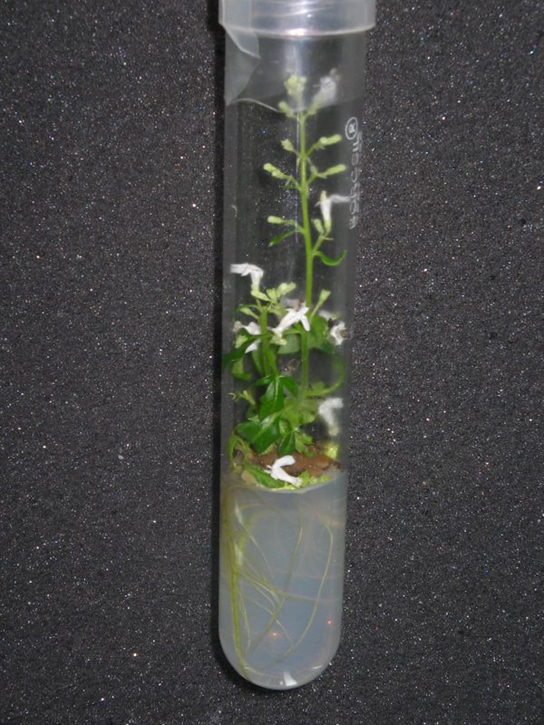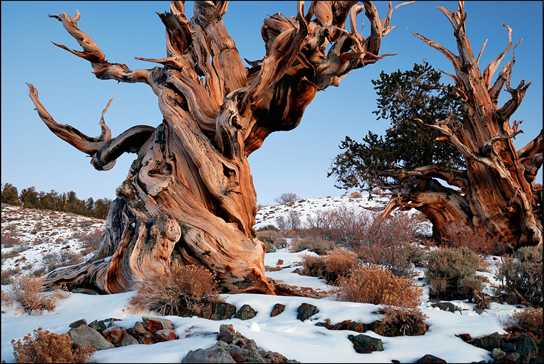| << Chapter < Page | Chapter >> Page > |

To start plant tissue culture, a part of the plant such as a stem, leaf, embryo, anther, or seed can be used. The plant material is thoroughly sterilized using a combination of chemical treatments standardized for that species. Under sterile conditions, the plant material is placed on a plant tissue culture medium that contains all the minerals, vitamins, and hormones required by the plant. The plant part often gives rise to an undifferentiated mass known as callus, from which individual plantlets begin to grow after a period of time. These can be separated and are first grown under greenhouse conditions before they are moved to field conditions.
The length of time from the beginning of development to the death of a plant is called its life span. The life cycle, on the other hand, is the sequence of stages a plant goes through from seed germination to seed production of the mature plant. Some plants, such as annuals, only need a few weeks to grow, produce seeds and die. Other plants, such as the bristlecone pine, live for thousands of years. Some bristlecone pines have a documented age of 4,500 years [link] . Even as some parts of a plant, such as regions containing meristematic tissue—the area of active plant growth consisting of undifferentiated cells capable of cell division—continue to grow, some parts undergo programmed cell death (apoptosis). The cork found on stems, and the water-conducting tissue of the xylem, for example, are composed of dead cells.

Plant species that complete their lifecycle in one season are known as annuals, an example of which is Arabidopsis , or mouse-ear cress. Biennials such as carrots complete their lifecycle in two seasons. In a biennial’s first season, the plant has a vegetative phase, whereas in the next season, it completes its reproductive phase. Commercial growers harvest the carrot roots after the first year of growth, and do not allow the plants to flower. Perennials, such as the magnolia, complete their lifecycle in two years or more.
In another classification based on flowering frequency, monocarpic plants flower only once in their lifetime; examples include bamboo and yucca. During the vegetative period of their life cycle (which may be as long as 120 years in some bamboo species), these plants may reproduce asexually and accumulate a great deal of food material that will be required during their once-in-a-lifetime flowering and setting of seed after fertilization. Soon after flowering, these plants die. Polycarpic plants form flowers many times during their lifetime. Fruit trees, such as apple and orange trees, are polycarpic; they flower every year. Other polycarpic species, such as perennials, flower several times during their life span, but not each year. By this means, the plant does not require all its nutrients to be channelled towards flowering each year.
As is the case with all living organisms, genetics and environmental conditions have a role to play in determining how long a plant will live. Susceptibility to disease, changing environmental conditions, drought, cold, and competition for nutrients are some of the factors that determine the survival of a plant. Plants continue to grow, despite the presence of dead tissue such as cork. Individual parts of plants, such as flowers and leaves, have different rates of survival. In many trees, the older leaves turn yellow and eventually fall from the tree. Leaf fall is triggered by factors such as a decrease in photosynthetic efficiency, due to shading by upper leaves, or oxidative damage incurred as a result of photosynthetic reactions. The components of the part to be shed are recycled by the plant for use in other processes, such as development of seed and storage. This process is known as nutrient recycling.
The aging of a plant and all the associated processes is known as senescence , which is marked by several complex biochemical changes. One of the characteristics of senescence is the breakdown of chloroplasts, which is characterized by the yellowing of leaves. The chloroplasts contain components of photosynthetic machinery such as membranes and proteins. Chloroplasts also contain DNA. The proteins, lipids, and nucleic acids are broken down by specific enzymes into smaller molecules and salvaged by the plant to support the growth of other plant tissues.
The complex pathways of nutrient recycling within a plant are not well understood. Hormones are known to play a role in senescence. Applications of cytokinins and ethylene delay or prevent senescence; in contrast, abscissic acid causes premature onset of senescence.
Many plants reproduce asexually as well as sexually. In asexual reproduction, part of the parent plant is used to generate a new plant. Grafting, layering, and micropropagation are some methods used for artificial asexual reproduction. The new plant is genetically identical to the parent plant from which the stock has been taken. Asexually reproducing plants thrive well in stable environments.
Plants have different life spans, dependent on species, genotype, and environmental conditions. Parts of the plant, such as regions containing meristematic tissue, continue to grow, while other parts experience programmed cell death. Leaves that are no longer photosynthetically active are shed from the plant as part of senescence, and the nutrients from these leaves are recycled by the plant. Other factors, including the presence of hormones, are known to play a role in delaying senescence.

Notification Switch
Would you like to follow the 'Biology' conversation and receive update notifications?